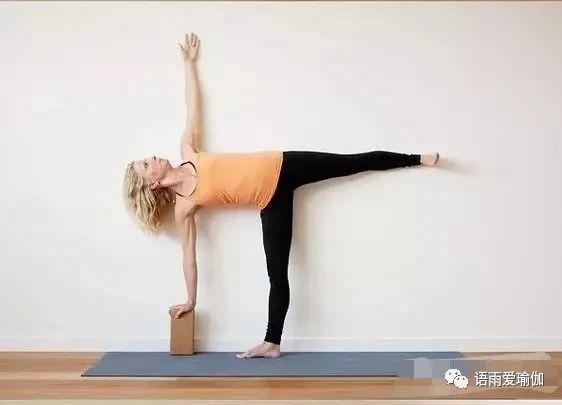Yoga half moon pose is a very challenging yoga pose.

It not only requires core strength and hip flexibility, but also challenges your coordination and balance.

For beginners, this posture may be an advanced posture in practice.

For more advanced practitioners, this is the basis for practicing sugarcane style.

This asana can improve your coordination and balance your body and mind.

Detailed explanation of asana starts with Warrior 2.

Move the center of gravity to the right foot, hold the right hand on the ground, and move the left foot forward to approach the right foot.

Exhale, with your left hand on your waist, extend your body to the right, lift your left leg off the ground, and make your left foot parallel to the floor and your right leg perpendicular to the ground.

Extend the right arm upward, on the same line as the shoulder, with the fingertip pointing to the ceiling, turn your head upward, and look at the fingertip with your eyes.

Fix your line of sight on a point (called drishti).

This will help you maintain balance.

To exit the position, bend your standing leg and then step your back foot on the ground.

Back to soldier 2.

What is your body doing in the half moon pose in the half moon pose, the spine is neutral and the chest rotates slightly to the side.

If the head is up, the neck will also rotate.

In the upper body, the forearms remain neutral, the shoulders are abducted and rotated outward.

For the lower body, we have to look at the standing leg and the raised leg respectively.
The joints of the standing leg are active.
The hip is flexed and abducted, while the knee is naturally extended.
Ankle dorsiflexion.
In the raised leg, the hip joint is extended and adducted, and the knee is naturally extended.
The ankle is in dorsiflexion.
Which muscles are involved in sports? In posture, the spinal extensors and flexors alternate between concentric and eccentric contractions to maintain the spinal alignment.
In order to rotate the head toward the flower plate, the muscles in the neck and the back of the head also need to contract concentrically.
The downward facing spinal muscles must contract eccentrically to resist the gravity generated by lateral bending.
In the standing leg, the gluteus medius and gluteus minimus affect the abduction of the hip joint.
In the raised leg, the hamstring and hip muscles contract concentrically to extend the hips.
What should you pay attention to in the half moon? Avoid rotating your chest toward the floor: This usually happens when you try to touch the ground.
To overcome this problem, please put a yoga brick under your front hand to increase the height.
This will make it easier for you to open your chest up.
Avoid locking the knee: locking the knee not only bears the risk of injury, but also reduces the flexibility of the hip joint.
You will not be able to keep your pelvis open.
Avoid straining your neck too much: if you have any problems with your neck, turn your head to face the floor or the front instead of looking at the sky.
Posture change beginners can practice with assistive devices.
1.
Use yoga bricks if it is difficult for you to touch your hands to the ground, please use yoga bricks.
In practice, adjust the height of the Yoga brick, that is, start from the highest point, and slowly reduce the height with the improvement of balance and stability.
2.
Lean against the wall if it is difficult to keep balance with one foot, try practicing near the wall.
Support the raised foot on the wall.
This helps your legs to be parallel to the floor.
3.
Partner assistance you can use your partner as a wall and support your partner’s body with your hips.
At the same time, you can support your lower hip with your hands without pulling it up.
This allows your chest to rotate steadily upward.
How to increase your intensity to challenge yourself in the half moon pose, please keep your posture as long as possible – up to 30 seconds.
1.
Lift your lower hand once you feel stable in the half moon pose, you can gradually reduce the weight of your lower hand until the tip of your middle finger touches the ground.
Or hover your hand over the ground.
2.
If you feel stable looking up at the sky, you can extend your upper arm to make it perpendicular to the ground.
If you can keep your balance, rotate your head slowly to make your eyes look up.
3, the high-level variant Ardha Chandra chapasana is a semi lunar high-level variant.
Bend the raised leg so that the heel moves toward the hip.
Extend your upper hand backward and buckle your ankle.
Push your feet into your hands to create a soft back bend.
The benefits of the half moon pose this pose is an excellent posture to improve your balance and concentration as well as your core stability.
It also strengthens the whole body, especially the thighs, ankles and feet.
This posture can also help you open your chest, chest and shoulders.
Since it enhances the sense of balance, it can reduce stress and help you clear your mind…

